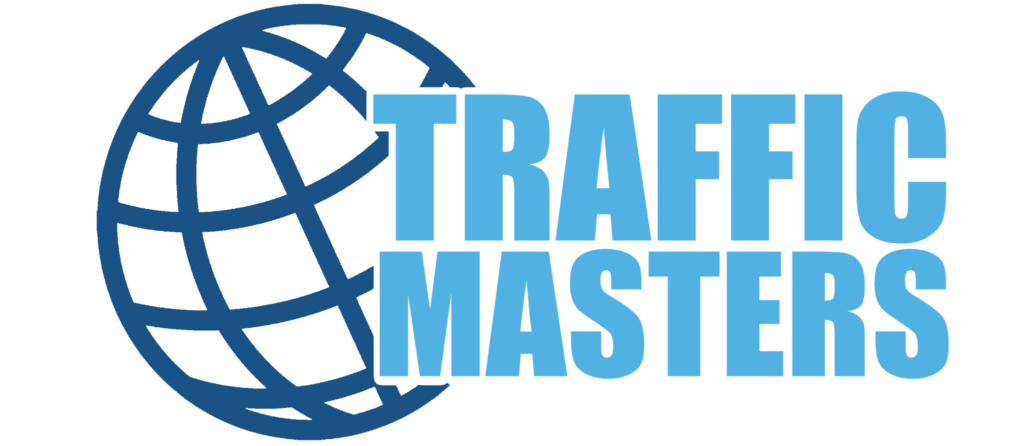Are you a digital marketer looking to drive more traffic to your website? Boosting website traffic is crucial for success in the online world, as it leads to more potential customers and increased conversions. However, with so much competition, it can be challenging to stand out and attract visitors. In this article, we will explore expert strategies that can help you drive traffic to your website and achieve your marketing goals.
What you will learn:
- How to understand your target audience through market research and creating buyer personas.
- How to optimize your website for search engines by conducting keyword research and ensuring a mobile-friendly and user-friendly interface.
- How to drive traffic to your website through high-quality content, social media platforms, guest blogging, email marketing, paid advertising, collaborations, and monitoring and analyzing website traffic.

Understanding Your Target Audience
Before implementing any traffic-driving strategies, it is essential to have a deep understanding of your target audience. Conducting thorough market research is crucial in gathering insights about your potential customers. By understanding their needs, preferences, and pain points, you can tailor your marketing efforts to effectively reach and engage them.
A. Conducting Market Research
Market research involves gathering and analyzing data about your target market, industry trends, and competitors. This can be done through surveys, interviews, focus groups, and online research. By understanding the current market landscape, you can identify opportunities and develop strategies to drive traffic to your website.
B. Creating Buyer Personas
Buyer personas are fictional representations of your ideal customers. They help you understand your audience on a deeper level, considering their demographics, interests, goals, and challenges. By creating detailed buyer personas, you can create content and marketing campaigns that resonate with your target audience and drive traffic to your website.
C. Analyzing Demographics, Interests, and Online Behavior
Analyzing demographics, interests, and online behavior of your target audience helps you identify the best channels and strategies to reach them. By leveraging tools like Google Analytics and social media insights, you can gain valuable insights into their age, gender, location, preferences, and browsing habits. Armed with this information, you can optimize your website and marketing efforts to effectively drive traffic.

Optimizing Your Website for Search Engines
Search engine optimization (SEO) plays a vital role in driving organic traffic to your website. By optimizing your website for search engines, you can improve your visibility in search results and attract targeted traffic. Here are some key strategies to consider:
A. Conducting Thorough Keyword Research
Keyword research is the foundation of SEO. By identifying relevant keywords and phrases that your target audience is searching for, you can optimize your content to rank higher in search engine results pages (SERPs). Use tools like Google Keyword Planner, SEMrush, or Moz Keyword Explorer to find high-volume, low-competition keywords that align with your content and target audience.
B. Incorporating Relevant Keywords into Content, Meta Tags, Headings, and URLs
Once you’ve identified your target keywords, it’s essential to incorporate them strategically throughout your website. Optimize your meta tags, headings, URLs, and content with relevant keywords to help search engines understand the context of your pages. However, it’s important to use keywords naturally and avoid keyword stuffing, as it can negatively impact your rankings.
C. Ensuring Mobile-Friendliness, Fast Loading Speed, and User-Friendly Interface
User experience (UX) is a crucial factor in SEO and website traffic. Ensure that your website is mobile-friendly, as a significant portion of internet users access websites through mobile devices. Additionally, optimize your website for fast loading speed and provide a user-friendly interface. A seamless and intuitive user experience will not only encourage visitors to stay longer on your site but also improve your search engine rankings.
| Strategy | Description |
|---|---|
| Conducting Thorough Keyword Research | Identify relevant keywords and phrases that your target audience is searching for to optimize your content for higher rankings in search engine results. |
| Incorporating Relevant Keywords into Content | Strategically incorporate keywords into your content, meta tags, headings, and URLs to help search engines understand the context of your pages. |
| Ensuring Mobile-Friendliness and Fast Loading Speed | Optimize your website for mobile devices and ensure fast loading speed to provide a seamless user experience and improve search engine rankings. |
| Developing Comprehensive Content Strategy | Plan and organize your content creation efforts by identifying topics, target audience, and distribution channels to stay consistent in your messaging. |
| Publishing Various Content Formats | Diversify your content by publishing blog posts, articles, videos, infographics, etc., to attract and engage your target audience. |
| Providing Valuable and Informative Content | Address your target audience’s pain points, answer their questions, and provide actionable insights to position yourself as a trusted source of information. |
| Creating Personalized Emails | Segment your email list and personalize your emails based on demographics, interests, and past behavior to increase click-through rates. |
| Utilizing Paid Advertising | Invest in platforms like Google Ads, social media ads, or display ads to reach specific audiences and increase website traffic. |
| Seeking Cross-Promotion and Partnerships | Collaborate with other websites and businesses through cross-promotion, webinars, guest posts, and product/service promotion to tap into new audiences. |
| Monitoring and Analyzing Website Traffic | Utilize analytics tools like Google Analytics to track and analyze your website traffic, user behavior, and conversions. |
| Continuously Optimizing and Improving | Regularly review and refine your strategies, experiment with new tactics, and stay updated with digital marketing trends for sustainable traffic growth. |

Creating High-Quality and Engaging Content
Content is king in the digital marketing world. By creating high-quality and engaging content, you can attract and retain visitors, establish authority in your industry, and drive organic traffic. Here are some strategies to consider:
A. Developing a Comprehensive Content Strategy
A content strategy outlines the types of content you’ll create, the target audience for each piece, and the distribution channels you’ll use. It helps you stay consistent in your messaging and ensures that your content resonates with your target audience. Identify the topics and formats that your audience is interested in and create a content calendar to plan and organize your content creation efforts.
B. Publishing Blog Posts, Articles, Videos, Infographics, etc.
Diversify your content by publishing blog posts, articles, videos, infographics, and other formats that align with your audience’s preferences. Written content is essential for SEO, as search engines can easily crawl and index text-based content. However, visual content like videos and infographics can also attract visitors and encourage social sharing, thereby driving traffic to your website.
C. Providing Valuable and Informative Content for the Target Audience
Focus on providing value to your target audience through your content. Address their pain points, answer their questions, and provide actionable insights. By positioning yourself as a trusted source of information, you’ll attract visitors who are genuinely interested in your offerings. Additionally, consider creating long-form content, as it tends to perform better in search engine rankings and attracts more backlinks.

Leveraging Social Media Platforms
Social media platforms offer immense opportunities to drive traffic to your website and engage with your target audience. By leveraging the power of social media, you can amplify your content, build brand awareness, and attract visitors who are interested in what you have to offer. Here’s how:
A. Creating Profiles on Relevant Social Media Platforms
Identify the social media platforms that your target audience frequents and create profiles on those platforms. For instance, if you’re targeting a younger demographic, platforms like Instagram and TikTok might be more suitable. Optimize your profiles with relevant keywords, compelling descriptions, and links to your website.
B. Sharing Content Regularly and Engaging with Followers
Consistency is key when it comes to social media. Share your content regularly and engage with your followers by responding to comments, messages, and mentions. Encourage social sharing by including social sharing buttons on your website and blog posts. This will help increase your reach and attract more traffic to your website.
C. Participating in Communities and Utilizing Social Media Advertising
Join relevant communities and groups on social media platforms where your target audience is active. Engage in discussions, share your expertise, and provide value to the community. Additionally, consider investing in social media advertising to target specific demographics and reach a wider audience. Platforms like Facebook Ads and Instagram Ads offer robust targeting options to help you drive traffic to your website.
Guest Blogging and Influencer Collaborations
Collaborating with popular blogs, websites, and influencers can significantly expand your reach and drive traffic to your website. By leveraging their existing audiences, you can tap into new pools of potential customers. Here’s how:
A. Reaching Out to Popular Blogs and Websites for Guest Posting Opportunities
Identify influential blogs and websites in your industry and reach out to them for guest posting opportunities. Craft high-quality, informative, and engaging guest posts that provide value to their audience. Include relevant links back to your website within the content or author bio, as this can drive traffic from their audience to your site.
B. Collaborating with Influencers to Expand Reach and Leverage Existing Audiences
Influencer marketing is a powerful strategy to drive targeted traffic to your website. Identify influencers in your industry who have a large and engaged following. Collaborate with them to create content, host giveaways, or promote your products/services. By leveraging their influence and credibility, you can attract their audience to visit your website.
C. Utilizing Backlinks for Increased Website Traffic
Backlinks, or incoming links from other websites, are a crucial factor in SEO and website traffic. Focus on obtaining quality backlinks from reputable websites within your industry. Guest blogging, influencer collaborations, and creating compelling content can all help attract backlinks. The more high-quality backlinks you have, the higher your website will rank in search engine results, driving more traffic.

Harnessing the Power of Email Marketing
Email marketing allows you to nurture relationships with your audience and drive traffic to your website on an ongoing basis. By building an email list of engaged subscribers, you can send targeted emails that encourage them to visit your website. Here’s how to effectively utilize email marketing:
A. Building an Email List of Engaged Subscribers
Offer valuable incentives, such as exclusive content, discounts, or free resources, to encourage visitors to subscribe to your email list. Use lead magnets, pop-ups, or landing pages to capture their email addresses. Ensure that you obtain explicit permission to send them emails and comply with email marketing regulations.
B. Sending Newsletters, Updates, and Promotions to Drive Traffic
Regularly send newsletters, updates, and promotions to your email subscribers to keep them engaged and drive traffic to your website. Include links to relevant blog posts, new products/services, or special offers. Personalize your emails based on the subscriber’s interests and past interactions with your website to increase click-through rates.
C. Personalizing Emails and Optimizing for Click-Through Rates
Segment your email list based on demographics, interests, and past behavior to personalize your emails. Use dynamic content and personalized recommendations to make your emails more relevant and engaging. Additionally, optimize your emails for higher click-through rates by using compelling subject lines, clear calls-to-action, and mobile-friendly design.
Investing in Paid Advertising
While organic traffic is essential, paid advertising can provide a significant boost in driving targeted traffic to your website. By investing in platforms like Google Ads, social media ads, or display ads, you can reach specific audiences and increase your website traffic. Here’s how:
A. Using Google Ads, Social Media Ads, or Display Ads to Target Specific Audiences
Google Ads allows you to display ads in search results, reaching users who are actively searching for products or services like yours. Social media ads, such as Facebook Ads or Instagram Ads, enable you to target specific demographics and interests. Display ads can be placed on relevant websites within your industry to attract visitors to your website.
B. Setting a Budget and Optimizing Ads for Maximum Conversions
Define a budget that aligns with your marketing goals and monitor the performance of your ads closely. Continuously optimize your ads by testing different variations, targeting options, and ad formats. Use conversion tracking and analytics tools to measure the effectiveness of your campaigns and make data-driven adjustments to maximize your website traffic.
C. Analyzing and Adjusting Campaigns Based on Performance Metrics
Regularly analyze the performance metrics of your paid advertising campaigns. Monitor key metrics such as click-through rates, conversion rates, and cost-per-click to evaluate their effectiveness. Identify underperforming campaigns and make adjustments to improve their performance. A data-driven approach will help you optimize your advertising efforts and drive more traffic to your website.
Collaborating with Other Websites and Businesses
Collaborating with other websites and businesses can help you tap into new audiences and expand your reach. By seeking cross-promotion and partnerships, you can leverage complementary audiences to drive traffic to your website. Here’s how:
A. Seeking Cross-Promotion and Partnerships
Identify websites, blogs, or businesses that target a similar audience but offer complementary products or services. Reach out to them and propose cross-promotion opportunities. This can include exchanging guest posts, featuring each other’s products/services, or co-hosting webinars. Collaborating with like-minded businesses can help you tap into their audience and attract new visitors to your website.
B. Co-Hosting Webinars, Exchanging Guest Posts, Promoting Products/Services
Webinars are a powerful way to provide valuable content and attract new visitors to your website. Collaborate with industry experts or businesses to co-host webinars that cater to your target audience’s interests. Additionally, consider exchanging guest posts with relevant websites to drive traffic from their audience to yours. Promote each other’s products or services to leverage their existing customer base and increase website traffic.
C. Leveraging Complementary Audiences for Increased Website Traffic
Identify businesses or websites with complementary audiences and explore opportunities for collaboration. By leveraging each other’s audiences, you can drive traffic to your website from a broader pool of potential customers. Look for mutually beneficial partnerships and creative ways to tap into new audiences that align with your target market.
Case Study: How Jane Increased Website Traffic by 150% with Social Media Advertising
Jane is a digital marketer who was struggling to drive traffic to her client’s website. She had tried various strategies, but nothing seemed to work effectively. Determined to find a solution, Jane decided to leverage social media advertising.
She started by researching her client’s target audience and identifying the social media platforms they frequented the most. Then, she created profiles on those platforms and began sharing engaging content regularly. Jane also utilized social media advertising to reach a wider audience and drive traffic to the website.
To make her ads more effective, Jane carefully selected her target audience based on demographics, interests, and online behavior. She created eye-catching ad creatives and compelling ad copy that resonated with her audience.
The results were astounding. Within a few weeks of implementing social media advertising, Jane’s client saw a significant increase in website traffic. In fact, the website traffic increased by 150%, surpassing their initial goals.
Not only did the website traffic increase, but the engagement on social media also skyrocketed. Jane’s client received more likes, comments, and shares on their social media posts, leading to increased brand visibility and awareness.
Jane continued to monitor and analyze the website traffic using analytics tools like Google Analytics. She identified the most effective social media platforms and ad campaigns and made data-driven adjustments to optimize the results further.
Thanks to Jane’s strategic use of social media advertising, her client’s website experienced sustainable traffic growth. The increased traffic translated into more leads, conversions, and ultimately, business growth for her client.
This case study demonstrates the power of social media advertising in driving website traffic. By understanding the target audience, creating engaging content, and utilizing effective ad targeting, digital marketers can achieve significant results and help their clients thrive in the online space.
Monitoring and Analyzing Website Traffic
To measure the effectiveness of your strategies and make data-driven adjustments, it’s crucial to monitor and analyze your website traffic. By utilizing analytics tools like Google Analytics, you can gain valuable insights into your visitors’ behavior, traffic sources, and conversions. Here’s how to effectively monitor and analyze your website traffic:
A. Utilizing Analytics Tools like Google Analytics
Google Analytics is a powerful tool that provides comprehensive data about your website’s performance. Install it on your website and familiarize yourself with its features. Track key metrics such as the number of visitors, page views, bounce rates, and conversion rates. Utilize the data provided to gain insights into your traffic sources and user behavior.
B. Tracking Traffic Sources, User Behavior, and Conversions
Analyze the sources of your website traffic to understand which channels are driving the most visitors. Identify the pages or content that attract the most traffic and engage visitors for longer periods. Track user behavior on your website, such as the pages they visit, the time spent on each page, and the actions they take. Additionally, monitor conversions, such as sign-ups, purchases, or form submissions, to evaluate the effectiveness of your strategies.
C. Identifying Effective Strategies and Making Data-Driven Adjustments
Regularly review your website traffic data to identify the strategies that are driving the most traffic and conversions. Identify patterns, trends, and areas for improvement. Use A/B testing to experiment with different variations of your website, content, or marketing campaigns. Make data-driven adjustments based on the insights gained to optimize your strategies and continuously improve your website traffic.
Continuously Optimizing and Improving
In the ever-evolving digital marketing landscape, it’s crucial to continuously optimize and improve your strategies to stay ahead of the competition and drive sustainable traffic growth. Here are some key considerations:
A. Regularly Reviewing and Refining Strategies
Set aside time regularly to review your marketing strategies and assess their effectiveness. Identify what’s working well and what needs improvement. Stay updated with the latest SEO trends and digital marketing best practices. Be open to experimenting with new tactics and refining your strategies to maximize your website traffic.
B. Experimenting with New Tactics and Staying Updated with Digital Marketing Trends
Digital marketing is constantly evolving, with new tactics and trends emerging regularly. Stay updated with the latest industry news, attend webinars or conferences, and connect with other experts in the field. Experiment with new tactics and technologies to drive traffic. However, remember to measure their effectiveness and make data-driven decisions to ensure you’re investing your resources wisely.
C. Refining Website, Content, and Marketing Efforts for Sustainable Traffic Growth
Consistency is key when it comes to driving website traffic. Continuously refine your website, content, and marketing efforts to provide a seamless and engaging experience for your visitors. Optimize your website for better performance, update your content regularly, and adapt your marketing campaigns to align with changing consumer behavior. By focusing on sustainable traffic growth, you can achieve long-term success in driving traffic to your website.
FAQ
Who can benefit from learning how to drive traffic to their website?
Digital marketers and online businesses can benefit greatly.
What are effective strategies to drive traffic to your website?
SEO optimization, social media marketing, and content creation.
How long does it take to see results from driving traffic to a website?
Results vary, but with consistent efforts, you can see improvements within a few weeks.
What if I don’t have a large budget for driving traffic to my website?
There are cost-effective strategies like organic SEO and social media marketing.
How do I measure the success of my website traffic efforts?
Use tools like Google Analytics to track metrics such as page views and conversion rates.
What if I’m not tech-savvy? Can I still drive traffic to my website?
Absolutely! You can hire professionals or take online courses to learn the necessary skills.


